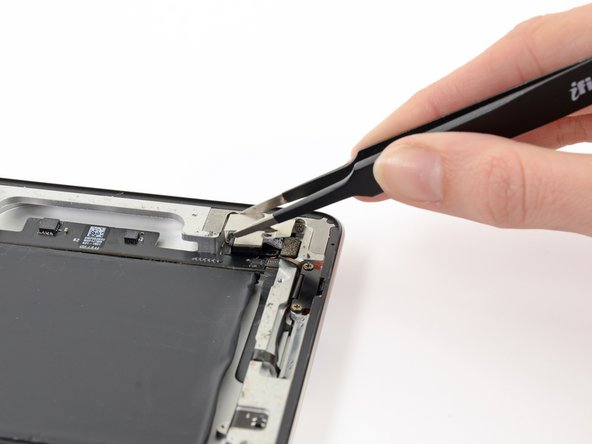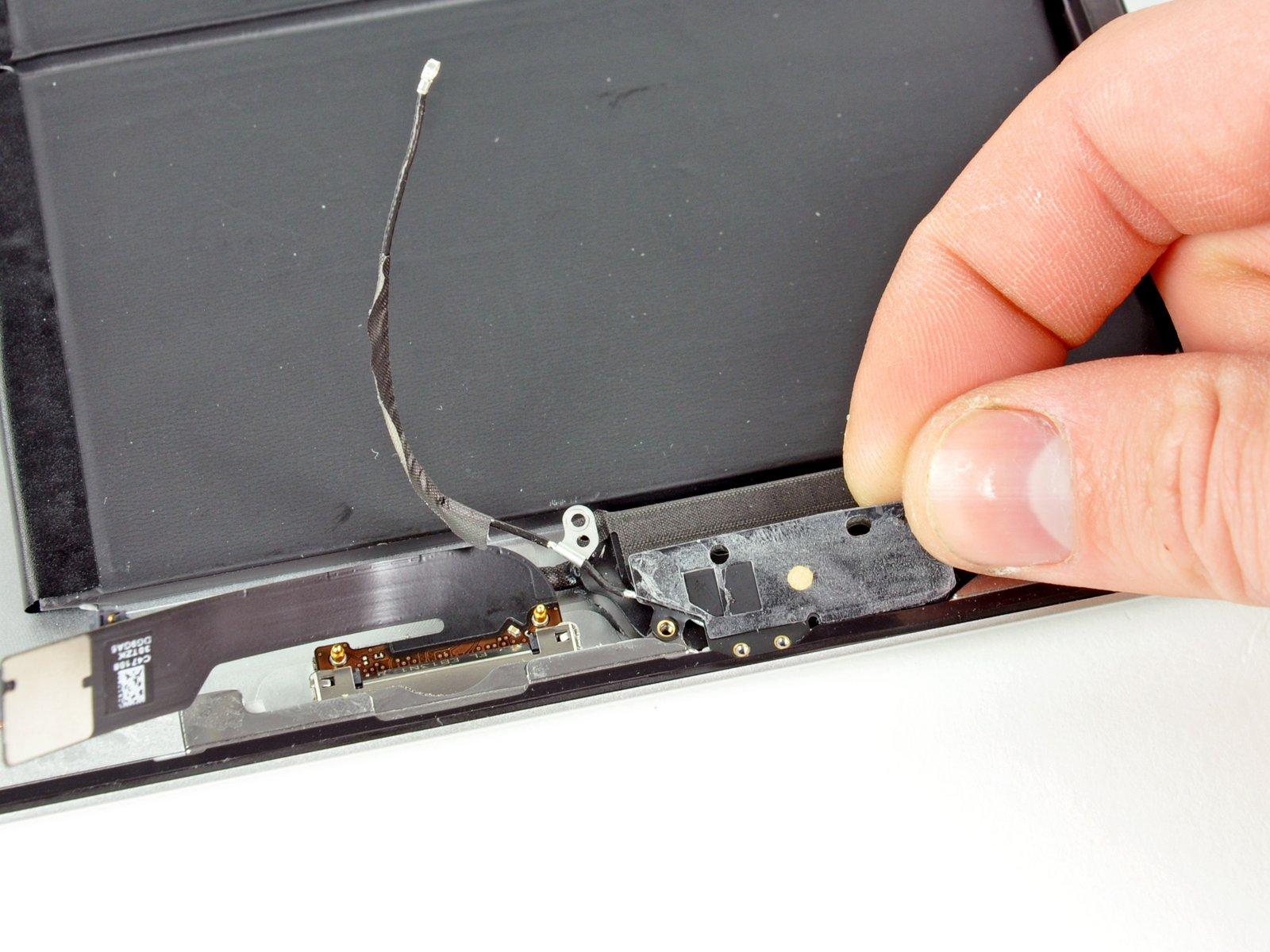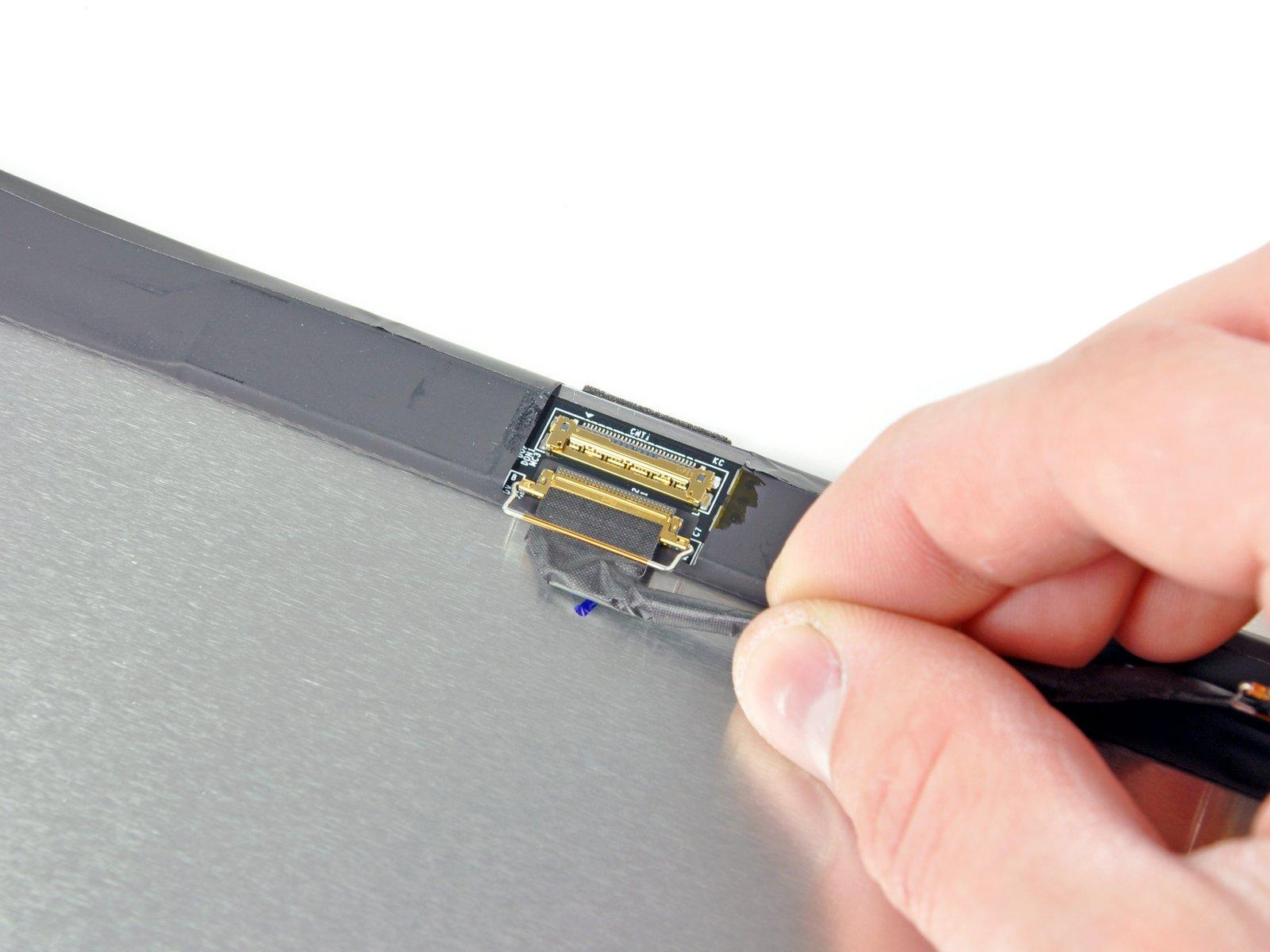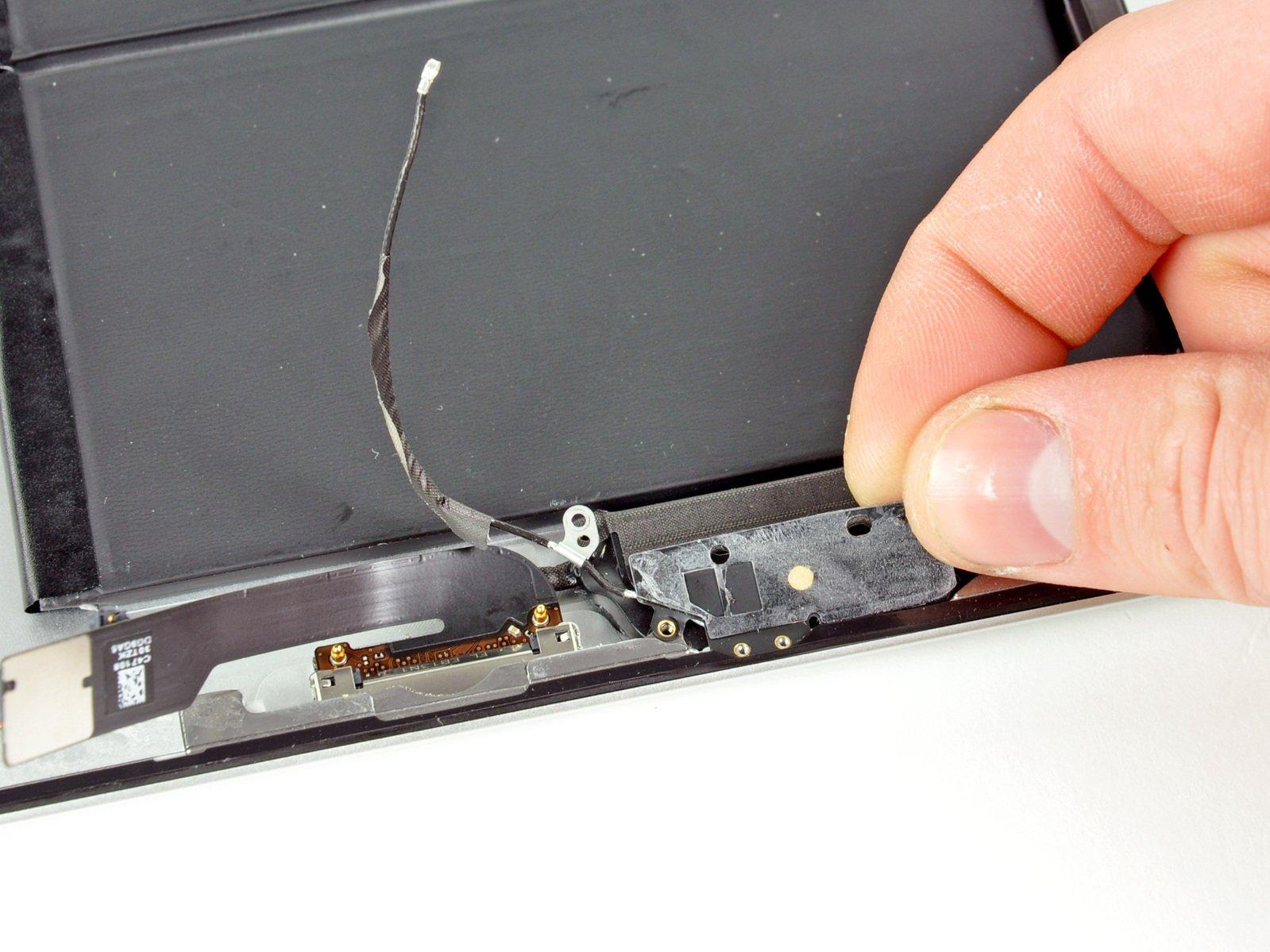How to Replace iPad Wi-Fi EMC 2560 Rear Facing Camera
Duration: 45 minutes
Steps: 33 Steps
Heads up! It’s time to give your device some TLC. Remember, if you find yourself in a pickle, just schedule a repair and let the pros handle it!
Follow this guide to swap out that pesky broken rear-facing camera. Don’t let the internet miss out on your cat’s wild shenanigans!
Step 1
Before you dive in, it’s a great idea to give your microwave a quick clean. Any stubborn gunk hanging out at the bottom might just cling to the iOpener, and we don’t want that!
– Pop the iOpener right in the middle of the microwave and let it get nice and toasty!
Tools Used
Step 2
Keep an eye on that iOpener during your repair adventure! Overheating can lead to a dramatic burst, and we definitely don’t want that. Aim to keep it under 100˚C (212˚F) for a smooth sailing experience.
If your iOpener looks a bit puffy, it’s best to steer clear. Safety first!
If the center of your iOpener is still too hot to handle, hang tight! You can keep using it while it cools down a bit before giving it another heat-up. A well-heated iOpener should stay cozy for about 10 minutes.
– Pop that iOpener in the microwave for thirty seconds to get the party started!
– As you dive into the repair, keep an eye on the iOpener—when it starts to cool down, just give it another thirty seconds in the microwave to keep the good vibes going!
Tools Used
Step 3
Careful there! The iOpener is going to be super hot, so handle it with care. An oven mitt might just be your best buddy right now!
– Carefully take the iOpener out of the microwave, gripping one of the flat ends to keep your fingers safe from the hot center. Keep it cool, my friend!
Tools Used
Step 4
If a microwave isn’t in your kitchen arsenal, no worries! Just pop that iOpener into some boiling water and let it warm up like it’s at a spa day.
– Grab a pot or pan and fill it up with enough water to give your iOpener a nice soak.
– Heat that water up until it’s boiling, then turn off the heat. Safety first!
– Now, gently place the iOpener into the hot water for about 2-3 minutes. Make sure it’s getting a good swim in there.
– Using some tongs (because no one wants to get burned), carefully take the heated iOpener out of the water.
– Give the iOpener a good towel dry. We want it nice and cozy!
– And voila! Your iOpener is all set and ready to rock! If it needs a quick refresh, just heat the water back up, turn off the heat, and let the iOpener soak for another 2-3 minutes.
Tools Used
Step 5
Don your safety glasses to keep those peepers safe, and watch out for that LCD screen – it’s more delicate than it looks!
– If your display glass has a crack, let’s keep things in check and avoid any accidental injuries during your repair by sticking some tape on it.
– Apply overlapping strips of clear packing tape over the iPad’s display until it’s completely covered.
– Try your best to follow the rest of the guide as outlined. Just a heads up, once the glass starts cracking, it might keep on doing so while you work, and you may need to use a metal prying tool to gently lift the glass out.
Step 6
Hey there! Just a quick reminder: you’ll be handling some sharp glass bits during this process, so don’t forget to rock those safety glasses! They’ll keep you safe from any pesky flying shards.
– Place the iOpener flat on the right edge of your iPad, making sure it’s nice and smooth so it connects well with the iPad’s surface.
– Give the bag a little time to work its magic on the iPad for about 90 seconds before you try to pry open the front panel.
Tools Used
Step 7
Getting that wedged tip of the opening tool between the glass and plastic might take a bit of muscle! Just take your time, stay chill, and wiggle the plastic opening tool gently back and forth as needed. You’ve got this!
– Spotting a little gap in the adhesive ring at the upper right corner of your iPad? That’s about 2.0 inches (around 5 cm) from the top. Let’s use that to our advantage!
– Now, line up your tool with the mute button. Carefully slide the tip of a plastic opening tool into that gap between the front glass and the plastic bezel. Just get the very tip in there to gently widen the crack.
Step 9
– With the plastic opening tool snugly positioned between the front glass and the plastic bezel, gently slide a plastic opening pick into the little gap right next to your trusty tool. You’re on the right track!
Step 10
– Take out the plastic opening tool from your iPad, and slide that opening pick in a bit deeper under the front glass—aim for about 0.5 inches. You’ve got this!
Step 12
The adhesive is super strong, so you might need to put in some elbow grease. Just take it slow and steady!
If you can spot the tip of the opening pick peeking out from under the front glass, give it a gentle tug. While it’s totally safe to use the pick at this depth, just a heads up—it might leave some adhesive goo on the LCD. No biggie, just part of the adventure!
– As the iOpener warms up the bottom edge, let’s get to work on loosening the adhesive on the right edge of your iPad.
– Gently slide the opening pick down along the edge of the iPad, and watch as the adhesive gives way to your skilled touch.
Tools Used
Step 13
You might find it helpful to slide the warm iOpener back onto the right edge of your iPad while you work on freeing up that sticky adhesive. Just keep in mind, this might depend on how long your iPad has been chilling while you tackled other tasks.
– If your opening pick is feeling a bit clingy with that adhesive, just give it a gentle roll along the side of the iPad. Keep at it, and you’ll release that sticky situation in no time!
Tools Used
Step 14
– Before you pop that first opening pick from the bottom corner of your iPad, slide a second pick under the right edge of the front glass to keep that pesky adhesive from sticking again.
– Give your iOpener a little reheat love, and then place it at the top edge of the iPad.
Tools Used
Step 15
The Wi-Fi antenna is snugly fastened to the bottom right edge of the rear case of your iPad with screws and a cable. Given the way the Wi-Fi antenna is positioned, it’s super important to be careful during this process, or you could end up causing some serious damage to it.
– Alright, friends, it’s time to channel your inner repair guru! Just a heads-up: the next steps are a bit tricky, so let’s take it slow and steady.
– You’ll need to gently free the adhesive holding the antenna to the front panel. Be super careful not to mess with the delicate bits connecting the antenna to the bottom of the iPad. Stick to the following steps like glue!
Step 16
Hey there! Just a friendly reminder: try not to slide that pick any further than the bottom right corner. Going too far might give your Wi-Fi antenna a little too much excitement, and we definitely don’t want that!
– Gently glide the opening pick around the bottom right corner of your iPad to free up that sticky adhesive. You’ve got this!
Step 17
As you glide that trusty opening pick along the bottom right edge of the front panel, keep an eye out! The Wi-Fi antenna is sneaking right near the corner, and if the adhesive decides to let go too easily, it could be game over for it. So, proceed with care and a little bit of finesse!
Keep that pick in place! Just slide it out a smidge so that about 1/8″ (3 mm) of the tip is still cozied up under the front glass. You’re doing great!
– Gently glide the tip of the opening pick along the bottom edge of the iPad to free up the adhesive over the Wi-Fi antenna. You’ve got this!
Step 18
– Now that you’ve gracefully glided past the Wi-Fi antenna (that’s about 3″ (75 mm) from the right edge, or snugly next to the home button), go ahead and reinsert that opening pick all the way in.
– Give the pick a gentle slide to the right; this will help release the adhesive that’s keeping the Wi-Fi antenna cozy against the front glass.
Step 19
Give your iOpener a little love! Heat it for no more than a minute at a time, and let it chill for at least two minutes before giving it another go.
If the adhesive has gotten a bit too cool along the bottom edge, give that iOpener a little heat-up session to warm things up where you’re working. Keep it cozy!
– Keep working that adhesive along the bottom of your iPad! Gently pull the opening pick out far enough to navigate around the home button, then slide it back in about half an inch (10 mm) once you’ve passed the home button. You’re doing great!
Tools Used
Step 20
– Keep working that adhesive free all along the bottom edge of your iPad—you’re almost there!
– Slide the opening pick in and leave it resting snugly under the front glass near the home button. You’ve got this!
Step 22
If your adhesive is feeling a bit too cool for comfort, simply swap out the iOpener at the top edge and keep going. If the iOpener itself has lost its warmth, just give it another round of heat!
– Gently glide the opening pick along the top edge of your iPad, giving it a little tug to navigate around the front-facing camera bracket.
– The adhesive here is pretty stubborn, so don’t be shy about applying some muscle! Just take it slow and steady to avoid any mishaps that could hurt you or your iPad.
– If the opening pick feels like it’s stuck in the adhesive, try giving it a little ‘roll’ as demonstrated in step 9.
Tools Used
Step 23
If the adhesive is feeling cozy and warm, go ahead and set the iOpener aside for now. But if it’s still hanging on a bit too tight, give the iOpener another warm-up and place it on the left edge while you work your magic.
– Keep peeling away that adhesive along the top edge of your iPad, and gently slide the opening pick around the top left corner like a pro!
Tools Used
Step 24
The digitizer cable hangs out about 2″ (50 mm) from the bottom of the iPad. So, when you’re sliding that pick, stop when you’re around 2.25″ (60 mm) from the bottom. You’ve got this!
– Gently glide the opening pick along the left edge of your iPad, as you peel away that pesky adhesive. It’s pretty thin here thanks to the digitizer running along the entire left side. Just keep the pick shallow (no more than 1/2 inch or 10 mm) to avoid any mishaps with the digitizer. You’ve got this!
Step 25
Be extra careful, as the bottom of the digitizer cable is only about 1 inch (25 mm) from the bottom of the iPad. Take your time and handle it gently to avoid cutting this cable!
– With that trusty opening pick still hanging out under the bottom edge of your iPad, let’s gently release the adhesive in the bottom left corner. You’ve got this!
Step 26
– Take one of those handy opening picks and gently lift up the bottom right corner of your iPad. Grab it with your fingers like you’re picking up a little treasure!
Step 27
Watch out for any sticky stuff that might still be hanging on! Grab an opening pick and carefully slice through any adhesive that’s keeping the front panel in place.
– Grab your iPad by the top and bottom right corners and gently twist the front glass away from the device. It’s like giving it a little hug while saying goodbye!
– When you’re putting everything back together, don’t forget to pamper that LCD! Use a microfiber cloth and some compressed air to whisk away any pesky dust or fingerprints before you place the glass back on. A clean screen is a happy screen!
Step 28
– Take out those four 2.0 mm Phillips screws that are keeping the LCD snugly attached to the rear case. You’ve got this!
Step 29
To get to those front panel ribbon cables hiding beneath the LCD, you’ll need to give the LCD a little flip and move it out of the way for a moment. You’ve got this!
– Gently lift the LCD from the edge nearest to the volume buttons and flip it out of the rear case, just like you’re turning the pages of your favorite book.
– Carefully place the LCD face down on the front panel.
Step 31
– Take out the lone 3.3 mm Phillips screw holding the rear-facing camera metal retainer clip in place.
Step 32
Just a friendly reminder: make sure that the little thermal pad is snugly attached to the metal retaining clip, just like you see in the third picture, when you’re swapping out that rear-facing camera!
– Gently pop the rear-facing camera metal retainer clip straight up from its cozy spot in the rear case.
Step 33
– Grab your trusty plastic opening tool and gently nudge that rear-facing camera connector up from its cozy spot on the control board.
– Now, go ahead and lift out the rear-facing camera like a pro!







































































